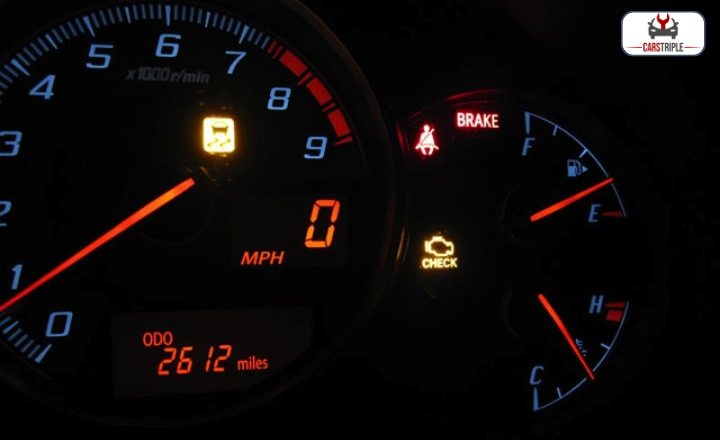The slip indicator light is a crucial safety tool in today’s cars. This light turns on when the car’s traction control system senses that the car isn’t gripping the road well. This might happen for many reasons like wet roads, speeding up too quickly, or taking a turn too fast. It warns drivers when the car’s grip on the road is weak.
The light lets drivers know they might lose control of their car and need to change how they’re driving. Join us as we unravel the secrets of this Slip warning light and comprehend its workings.
What Does A Slip Indicator Light Mean?
A slip warning light, or the traction control light, is a safety feature that warns drivers when the vehicle’s traction control system detects a lack of grip or stability. This can occur due to various reasons, including slippery road conditions, sudden acceleration, or abrupt turns, which can result in the wheels losing their grip on the road.
The purpose of this light is to alert drivers to adjust their driving behavior to prevent possible accidents and maintain control of the vehicle.
What Causes The Slip Warning Light To Stay On? (6 Causes)
Faulty Wheel Speed Sensor
A defective wheel speed sensor can cause the slip warning light to stay on. The system uses accurate data from each wheel speed sensor to function correctly. If one or more of these sensors malfunction, it can disrupt the entire traction control system and trigger the slip warning light.
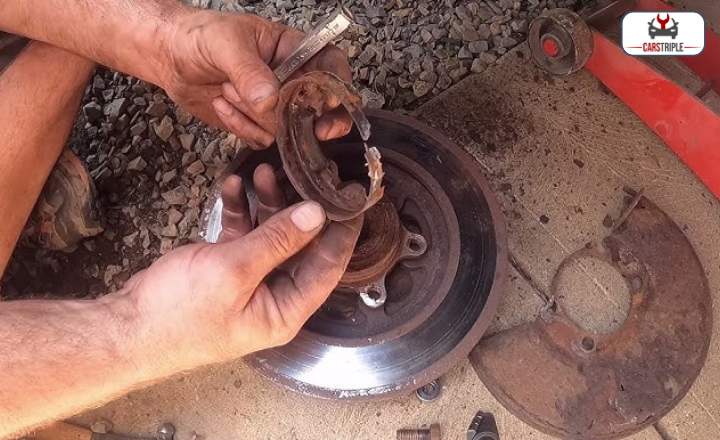
Wheel speed sensors monitor how fast each wheel rotates and send this information to the car’s computer system. This data is crucial for functions such as ABS (Anti Lock Braking System), Traction Control System, and Electronic Stability Control. When a sensor fails, it interrupts the flow of data, causing these systems to behave erratically or not work, leading to safety issues while driving.
Damaged Wiring
Damaged or corroded wiring can cause the slip indicator light to remain on. This happens because the wheel speed sensors and the traction control system cannot communicate effectively due to the compromised wiring. As a result, the traction control system may not accurately interpret and process the wheel speed data.
In such conditions, getting your vehicle inspected by a professional mechanic as soon as possible is crucial. They have the ability to identify the specific problem and take appropriate action. This could mean mending or swapping out broken wires.
Traction Control Module
The Traction Control Module (TCM) is a crucial component of your vehicle’s traction control system. It receives and processes data from the wheel speed sensors, and based on this information, it regulates the amount of power that needs to be applied to your vehicle’s wheels to prevent them from slipping or skidding.
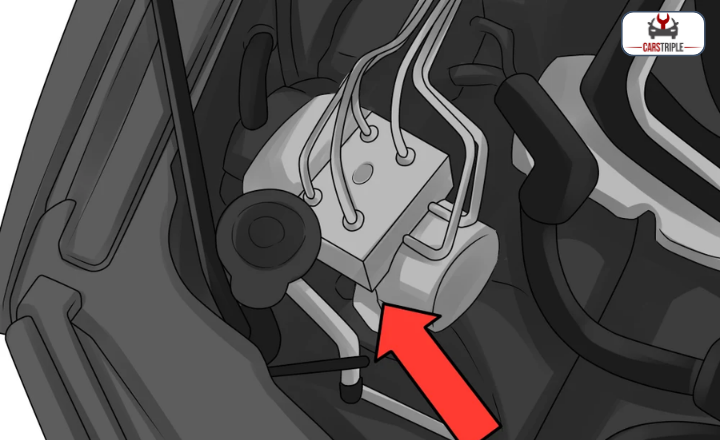
If the TCM is faulty, it may not interpret or respond to this data correctly, leading to issues with your vehicle’s traction control system. One common symptom of a defective TCM is the slip warning light remaining on even when there’s no slippage. This happens because the TCM can’t correctly assess the wheel speed and, therefore, can’t regulate power effectively.
Tires
Tires with insufficient tread depth or uneven wear can cause a loss of traction, which may activate your vehicle’s slip warning light. This light is part of your car’s traction control system and is designed to alert you when the vehicle senses a loss of traction or grip on the road surface.
Maintaining proper tire conditions is essential for optimal vehicle performance and safety. Regularly checking your tire pressure, rotating your tires, and inspecting them for signs of damage or excessive wear can help prevent issues with traction.
ABS System

The anti-lock Brake System (ABS) and the traction control system are closely related. Both systems rely on the same wheel speed sensors to function correctly. The ABS prevents wheels from locking up during braking, while the traction control system prevents wheels from spinning excessively under acceleration.
If there is a malfunction in the ABS, it can directly affect the performance of the traction control system. Both systems use similar components and share information to maintain vehicle stability.
Brake Fluid
Low brake fluid levels can indeed impact the functionality of a vehicle’s Anti-lock Braking System (ABS) and traction control systems. These systems rely on the hydraulic pressure provided by the brake fluid to function correctly. When there’s insufficient brake fluid, these systems may fail to operate as intended, leading to unsafe driving conditions.
If your slip warning light stays on, it may signal an issue with your vehicle’s braking and stability system, possibly due to insufficient brake fluid.
How Do You Fix A Slip warning light(5 Fixes)
Wheel Speed Sensors
Wheel speed sensors are crucial in traction control systems as they provide data about each wheel’s rotational speed. If these sensors are damaged or covered in debris, they may send inaccurate data to the traction control system, which could trigger the slip warning light.
Cleaning or replacing your wheel speed sensors when necessary is an effective solution to this issue.
Wiring Connections
Inspecting the wiring connections between the wheel speed sensors and the traction control module is indeed critical for maintaining the performance of your vehicle’s traction control system. Damaged or corroded wires can impede communication within the system, leading to inaccurate readings and potentially unsafe driving conditions.
Traction Control Module
If your traction control module is faulty, replacing it should restore the system’s functionality and turn off the slip warning light. The traction control module is crucial to your vehicle’s stability system. It communicates with other car parts to maintain traction and prevent skidding or slipping.
Proper Tire Condition
Maintaining good tire condition is crucial for your vehicle’s performance and safety. Regular inspections can help identify any wear or damage, such as cracks, cuts, punctures, or bulges. These could lead to tire failure if not addressed promptly. Also an uneven wear patterns may indicate a need for wheel alignment or tire rotation.
Brake Fluid Levels
Checking and replenishing brake fluid levels is a crucial aspect of vehicle maintenance. Brake fluid plays a vital role in transmitting the force of your foot pushing on the brake pedal to the brakes themselves, which helps stop your car. If the brake fluid level is low, it may lead to poor brake performance or even failure, which can be dangerous.
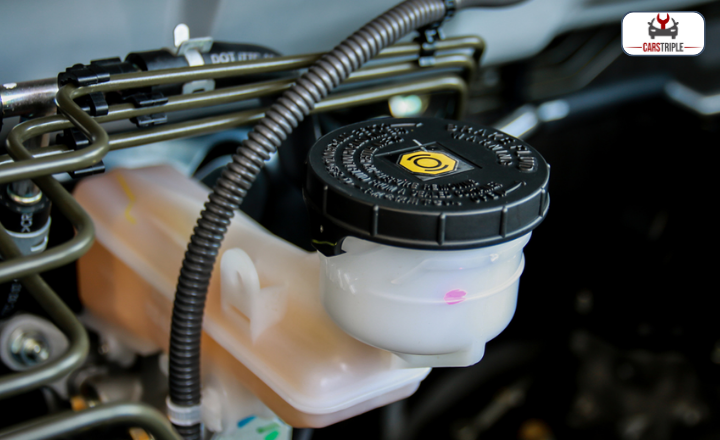
Adequate brake fluid levels are necessary for the proper functioning of the ABS (Anti-lock Braking System) and traction control systems. These systems rely on the hydraulic pressure the brake fluid provides to function effectively. Therefore, maintaining appropriate brake fluid levels could resolve issues with the slip warning light.
Is It Safe To Drive With The Slip Light On?
It’s not instantly risky to drive when the slip light is on, but it’s definitely not a good idea. The slip light is designed to alert you when your vehicle’s traction control system detects a lack of grip or stability. This could lead to skidding or loss of control, especially in adverse weather conditions or slippery roads.
If the slip light comes on and stays on, it’s a sign of an issue with your vehicle’s traction control system. It’s best to adjust your driving accordingly by slowing down and avoiding sudden manoeuvres until a professional inspects the car.
How Much Does It Cost To Fix A Slip Warning light?
The cost to fix a slip indicator light can vary, depending on the underlying issue causing the problem. If the issue is with a wheel speed sensor, you can pay between $100 and $300. Wiring issues are slightly less expensive, typically costing between $50 and $200.
If the problem lies with the traction control module, this is a more costly repair that can range from $200 to $600. The tire replacement or maintenance cost will depend on your specific needs and who you choose as your service provider. If the problem is due to brake fluid levels, getting a brake fluid flush is inexpensive and usually costs around $75 to $150.
Will Low Brake Fluid Cause A Slip Light?
Low brake fluid can indeed trigger a slip light. The reason is that your vehicle’s traction control and anti-lock braking system (ABS) are interconnected, and both require sufficient brake fluid to function optimally. When the brake fluid is low, it could impair these systems’ performance, activating the slip warning light as a warning.
So, it is crucial to regularly check and maintain appropriate brake fluid levels to ensure the safety and efficiency of your vehicle’s braking and stability systems.
What Are the Primary Functions of a Vehicle’s Traction Control System?
The Traction Control System, also known as TCS, is designed to enhance the stability of a car and prevent loss of grip in various driving conditions. The system achieves its primary functions by:
Wheel Slip
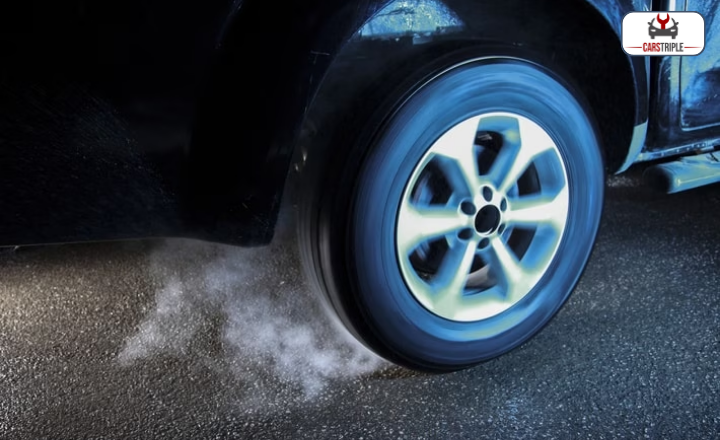
The Wheel Slip Traction Control System (TCS) is a safety feature in vehicles designed to prevent loss of traction. It works by constantly monitoring the speed of each wheel through wheel speed sensors. When the system detects an anomaly, such as a wheel spinning faster than the others (indicating loss of traction), it immediately intervenes.
Intervention may involve reducing engine power or applying brakes to the wheel to lose traction. This helps regain control and maintain stability, preventing potential skidding or sliding.
Brake Force
Brake Force TCS (Traction Control System) is designed to prevent wheels from spinning during acceleration by applying brake force selectively to the slipping wheel. This process helps slow down the wheel that’s losing traction and effectively redistributes torque to the wheels with better traction.
This system is beneficial when driving on slippery or uneven surfaces where one or more wheels may lose grip. It helps in maintaining vehicle stability and control, thereby enhancing safety. The TCS works in tandem with a car’s Anti-lock Braking System (ABS), ensuring optimal power distribution among all four wheels for smooth and safe driving.
Engine Power
It is also known as the Traction Control System (TCS). It’s designed to prevent loss of traction of driven road wheels. If a wheel starts to slip, the system can cut down the engine power or put brakes on that wheel. This aids in keeping the vehicle under control.
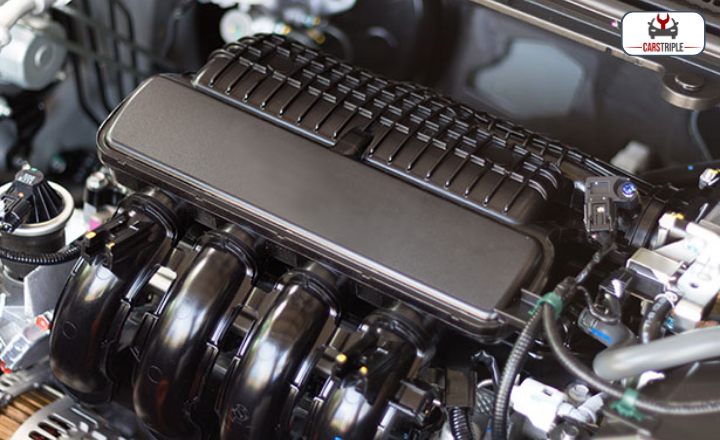
Communication with the Engine Control Module (ECM) is crucial in this process. The ECM manages most of your vehicle’s essential functions, including fuel mixture, ignition timing, and variable valve timing. So when TCS needs to reduce engine power to regain traction, it sends a signal to the ECM, which adjusts the engine’s output accordingly. Hence, this interaction helps keep your vehicle stable and safe on slippery roads.
Driver Confidence
The Traction Control System (TCS) provides a safety net for drivers. It is designed to prevent loss of traction of driven road wheels. In simpler terms, it prevents your car from skidding when you’re driving on slippery surfaces like wet or icy roads.
This TCS works by reducing the engine’s power or momentarily applying the brakes to the wheel that is losing traction. This system ensures that all wheels have enough grip on the road surface, thus maintaining vehicle stability and significantly reducing the chances of losing control over your car.
Assisting in Acceleration
Traction Control System (TCS) is a safety feature in most modern vehicles designed to prevent loss of traction while accelerating. It modulates engine power and braking force to maintain maximum contact between the tires and the road surface. This means that TCS can ensure your vehicle does so smoothly without losing grip when you need to accelerate quickly.
How Does The Slip Indicator Light Differ From The ABS Warning Light?
These two lights on your vehicle’s dashboard are connected to your car’s stability and braking mechanisms. They also indicate different issues:
Slip warning light
The slip warning light is a warning sign that your vehicle’s traction control system has detected a loss of traction. This means the wheels must grip the road properly, which can be dangerous if not addressed promptly. The light is designed to alert you, as the driver, so that you can adjust your driving behavior accordingly.
This light may come on temporarily during normal driving conditions, like driving over a slippery surface or making a sharp turn.
ABS Warning Light
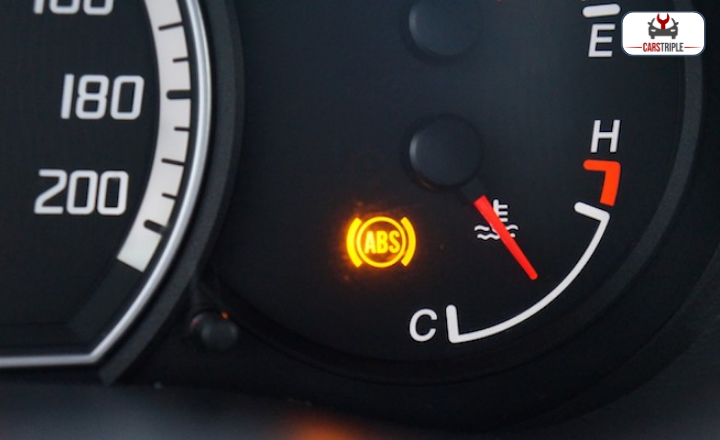
The ABS warning light on your dashboard is indeed a signal that there might be an issue with your Anti-lock Brake System. This system is critical for maintaining control of your vehicle during sudden braking, as it prevents the wheels from locking up and skidding. If this light illuminates, the system has detected a problem that could affect its ability to function correctly.
How Do Electronic Stability Control (ESC) Systems Work Conjunction With Traction Control Systems?
Traction Control Systems and ESC work together to maintain your vehicle’s stability and control. Traction Control Systems prevent your wheels from slipping when you accelerate. ESC is designed to detect and correct understeer and oversteer situations that could cause you to lose control of your vehicle. This wording is meant to be simple for everyone to understand.
Monitoring Vehicle Dynamics
Electronic Stability Control (ESC) systems are designed to improve a vehicle’s stability by detecting and minimizing skids. When ESC detects loss of steering control, it automatically applies the brakes to help steer the car where the driver intends to go. The sensors play a crucial role in this process.
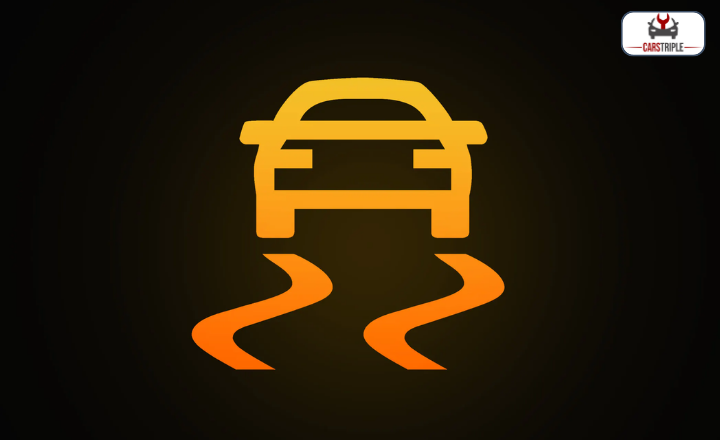
The steering angle sensor helps determine the direction the driver intends to steer, while the yaw rate sensor measures the rotational motion around the car’s vertical axis. The lateral acceleration sensor, on the other hand, detects side-to-side movement.
Intervening When Necessary
The Electronic Stability Control (ESC) system is designed to enhance the vehicle’s stability by detecting and reducing loss of traction. It automatically springs into action when it senses that the vehicle’s direction doesn’t match the driver’s intended course.
This intervention happens in two main ways: applying brake force to specific wheels or adjusting engine power. If the ESC detects oversteer or understeer, it can apply brakes to individual wheels to help steer the car back on track.
Working in conjunction with TCS
Traction Control System (TCS) and Electronic Stability Control (ESC) are integral parts of a car’s safety system and work together to ensure smooth and safe driving. They share standard components like wheel speed sensors, which monitor the rotational speed of each wheel.
TCS primarily prevents wheel spin during acceleration by reducing engine power or momentarily applying the brakes to that wheel, ensuring the vehicle’s drive wheels have maximum traction. On the other hand, ESC monitors the vehicle’s direction of travel. Suppose it senses a difference between the driver’s intended path (based on steering wheel position) and the vehicle’s actual path. In that case, it applies brake force to individual wheels to correct potential skidding or sliding situations during cornering or abrupt manoeuvres.
How Do Weather Conditions Impact The Slip Warning Light’s Functionality?
Weather conditions can considerably influence the operation of the slip warning light, as they alter the state of road surfaces and vehicle grip. Conditions such as rain, ice, or snow can make roads slick, raising the chances of wheel slippage and thus activating the slip warning light.
Wet Roads

Rain can cause roads to become slick, posing a challenge for tires to maintain traction. This is because the layer of water on the road reduces the friction between the tires and the road surface.
Your car’s slip warning light tends to flash more often when it’s wet outside. This is your car telling you that the wheels aren’t gripping the road properly. You need to change how you’re driving to stay safe.
Snow and Ice
Snowy and icy conditions significantly affect the road’s traction, causing your vehicle’s tires to lose grip. The slip warning light is a safety feature in your car that illuminates when it detects a loss of traction or grip. When this light occurs more frequently in weather conditions, your vehicle alerts you to the increased risk of skidding or slipping.
Using the snow tires or chains can be beneficial in such cases. Snow tires are designed with unique tread patterns that better grip snowy and icy surfaces, reducing the risk of slipping. Chains provide a rough surface that bites into the ice, offering additional traction.
Changes
Temperature fluctuations can indeed affect the pressure in your vehicle’s tires. As the temperature drops, the air inside your tire contracts, which leads to a decrease in tire pressure. This can result in reduced traction, making it more difficult to control your vehicle and potentially triggering your car’s slip warning light.
Drivers must regularly monitor their tire pressure, particularly during seasons with significant temperature changes, such as winter or summer.
How Does The Slip Indicator Light Function In Vehicles With All-Wheel Drive (AWD) Or Four-Wheel Drive (4WD)?
The slip warning light in vehicles with All-Wheel Drive (AWD) or Four-Wheel Drive (4WD) is a part of the vehicle’s traction control system. This system continuously monitors the speed of all four wheels during driving. If it detects that one or more wheels are rotating at a different speed than the others, indicating a loss of traction or ‘slip’, it will illuminate the slip warning light on the dashboard to warn the driver.
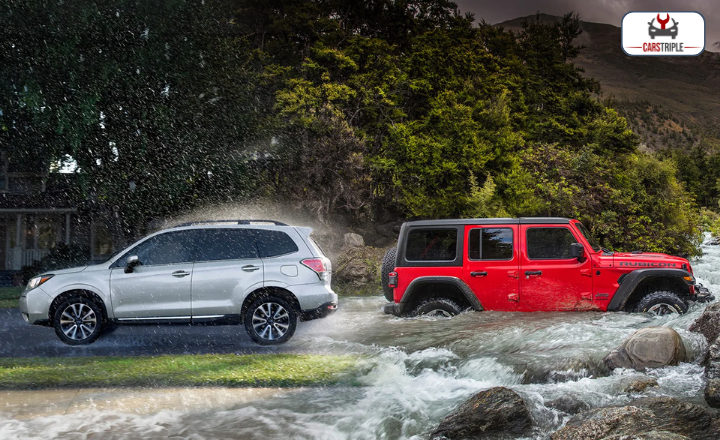
AWD and 4WD systems evenly provide power to all four wheels, which can significantly improve traction and stability, particularly in challenging driving conditions like snow, ice, or mud. This means that these vehicles experience less wheel slip than those with two-wheel drive systems, so their slip warning light might come on less frequently.
How Do Tire Pressure Monitoring Systems (TPMS) Relate To The Slip Warning light?
The Tire Pressure Monitoring System (TPMS) and the slip warning light are both essential features in a vehicle that contribute to its safety and performance. They don’t directly interact with each other, they are interconnected in terms of their function.
The TPMS is designed to detect if your tires are under-inflated, which can compromise the vehicle’s grip on the road surface, potentially leading to wheel slip. A vehicle’s traction and stability get affected when the tire pressure falls too low.
This decrease in traction can trigger the slip warning light to come on, indicating potential wheel slippage. To avoid slipping issues and keep the best grip on the road, you should frequently use the TPMS to check your tire pressure. Make sure it matches what the maker of your tires suggests. This way, you also won’t have to worry about your slip warning light turning on.
Can Aggressive Driving Trigger the Slip warning light?
Aggressive driving can trigger the slip warning light. This light is connected to your vehicle’s traction control system, which monitors the stability and traction of your car. Accelerating, braking hard, or making sharp turns can cause your vehicle to lose its grip on the road. The traction control system detects this loss of traction and activates the slip warning light as a warning signal.
You should change how you’re driving if you notice this light while driving fast. It’s a warning sign that you could have an accident or lose control of your vehicle. It’s always important to drive safely and responsibly, not only for your car’s performance but also for your safety and that of other road users.
Conclusion
Slip indicator light is essential to your vehicle’s traction control system. It alerts you to issues with your vehicle’s stability and traction, helping to prevent accidents on slippery roads. It’s vital for drivers to know what this light signifies and to take immediate action when it turns on. Regular maintenance checks can ensure that the system is always in top-notch condition. Stay safe by understanding your car better and acting promptly when the slip warning light comes on.
FAQ’s
Does the slip warning light come on during regular operation?
No, the slip warning light should not come on under normal circumstances and with the proper functioning of all systems.
How do I turn off my slip warning light?
The slip warning light should automatically turn off once the issue has been resolved. If it doesn’t, a mechanic will need to reset it manually.

